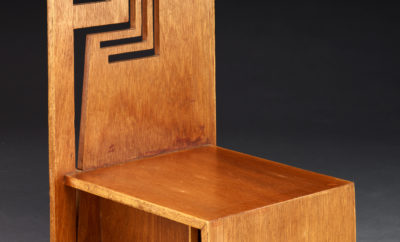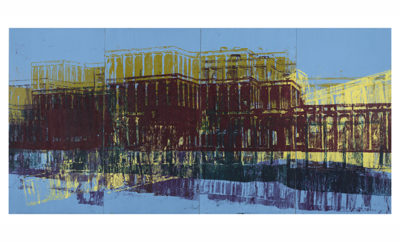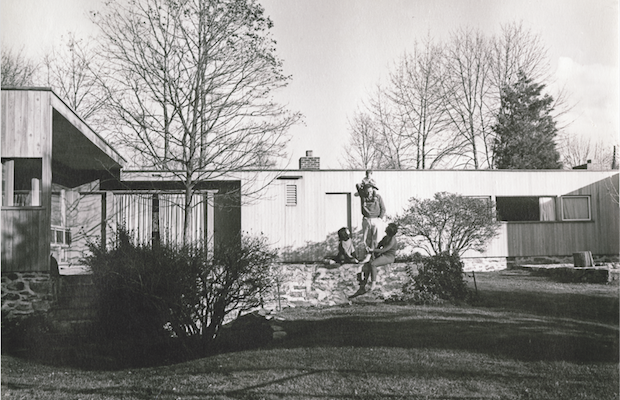 Josephine VonMiklos
Josephine VonMiklos
Architecture
Emerging from the Shadows: An Exhibition Sheds Light on Pound Ridge’s Trove of Mid-Century Houses
Philip Johnson’s Glass House is among twentieth-century modernism’s best known icons. Its arrival as a worshipful celebrant on the rural landscape of New Canaan, Connecticut, in 1949 inspired an architectural gold rush. By the close of 1953, more than thirty modernist houses had arisen, as documented in the New Canaan Mid-Century Modern Houses survey of 2008, and in the following decades the total would exceed one hundred, many thanks to Johnson’s fellow members of the Harvard Five—Marcel Breuer, Landis Gores, John Johansen, and Eliot Noyes. The town’s status as East Coast epicenter of mid-century modern houses was sealed.
Lost in New Canaan’s architectural history shadow is its neighbor across the state line, Pound Ridge, New York. It’s known for celebrity residents, past and current—Eartha Kitt, Susan Sarandon, Richard Gere—but encomiums are amnesiac when it comes to its mid-century modern design.
The Pound Ridge Historical Society rights that wrong in a small but compelling exhibition, Modern in Pound Ridge, on view through November 19, 2017.
New Canaan may be justifiably proud of its concentration of mid-century modern houses, but it turns out smaller and quieter Pound Ridge has more modernist houses per capita, a total of 47 salted among the wooded hills in this town of roughly 5,000.
The first, the Willcox House of 1939, resulted from a friendship between New York City attorney Bertram F. Willcox and architect John C. B. Moore, a Harvard graduate who taught at Columbia and became known for designing schools and campuses.
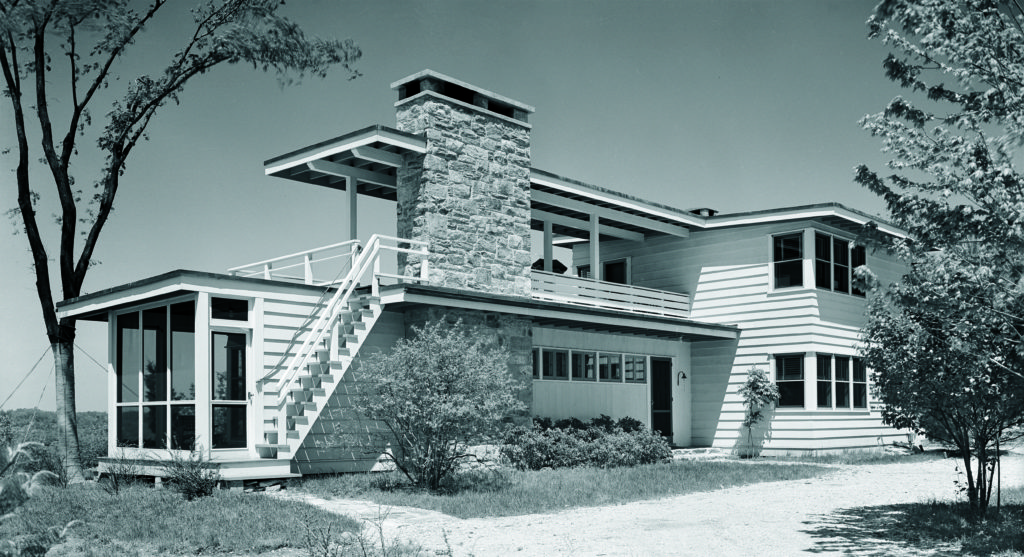
The Willcox House of 1939, designed by the architectural firm Moore & Hutchins, is the first modernist house in Pound Ridge, New York. It is now home to Gina Federico and her husband, Tom Andersen, who researched, designed, and wrote the text for the exhibit Modern in Pound Ridge. Courtesy Gottscho-Schleisner
Passed down through family, it’s now home to graphic designer Gina Federico, who designed the engaging wall panels that narrate the local story of modernism, and her husband, Tom Andersen, who researched and wrote the text for the exhibit. Giving a tour of their house, defined by its long roof deck, they point out an addition and reconfigurations, but the essential spirit remains unspoiled, vibrant, and timeless nearly eighty years later.
Moore, the architect, was so taken with Pound Ridge that he had his firm design a house for his family next door. Andersen’s research revealed that the Willcox House by Moore & Hutchins made it into the Museum of Modern Art’s Guide to Modern Architecture, Northeast States, published in 1940.
In one sense, the distant inspiration for the exhibit Modern in Pound Ridge is Marcel Breuer, who designed a house for his family in New Canaan in 1947. One summer, according to Andersen’s research, the architect rented the house to couples he knew from New York, Muriel and Joseph Hinerfeld and Helen and Gene Federico—Gina Federico’s parents.
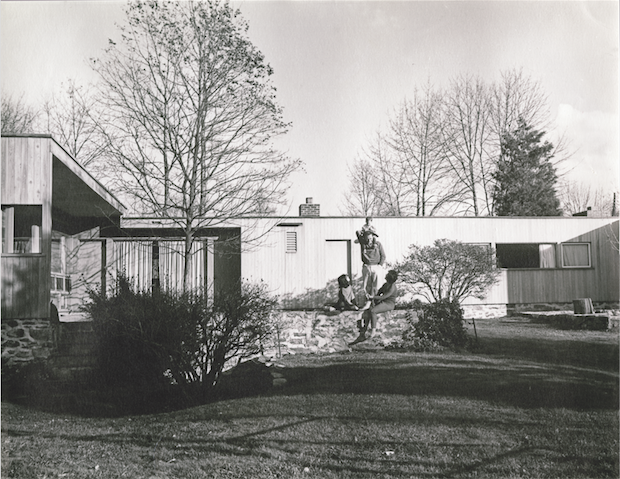
A 1960 photograph of advertising executives Helen and Gene Federico’s house. It was designed by architect Leroy Binkley, who had studied with Mies van der Rohe. Courtesy Josephine VonMiklos
Muriel and Helen were sisters, and the Hinerfelds purchased the Willcox House after discovering it was for sale, which prompted the Federicos to buy land nearby and commission architect Leroy Binkley, who had studied with Mies van der Rohe, to design a house for them. Many decades later, the trickle down effect has Federico and Andersen living in the Willcox House and endeavoring to persuade the world that Pound Ridge is no mid-century modern second fiddle.
While now-forgotten architects designed most midcentury houses in Pound Ridge, there are brand names. Frank Lloyd Wright’s influence is seen in a house designed by architect David Henken, who studied at Taliesin West, and the largest mid-century dwelling is the work of Edward Larabee Barnes. Architect Peter Blake, also a MoMA curator and Architectural Forum editor, designed a house with Julian Neski for the Champale Brewing Company owner.
The golden age of modernism in Pound Ridge stretched from the late 1930s into the 1970s, when postmodern and contemporary design added architectural Viagra to the core design principles of pure modernism—eschewing ornamentation in favor of simple, clean functionality, open interiors embracing efficiency, large windows and walls of glass that exalt nature and light, gentle siting in reverence of the setting, and flat or slightly pitched roofs.
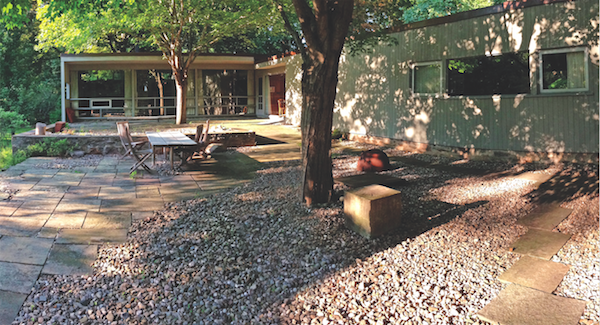
The Federico House in 2016. Courtesy Gina Federico
Pound Ridge also had the Vuko Tashkovich factor. Andersen’s research reveals that the Macedonian-born designer and builder, who worked for Eliot Noyes and John Johansen in New Canaan, is responsible for twenty-eight modern and contemporary houses in Pound Ridge, beginning in the late 1960s. Tashkovich gets his own panel in Modern in Pound Ridge, which includes an impressive model of one of his houses, but the Pound Ridge total of forty-seven mid-century modern houses doesn’t include his twenty-eight structures.
In the us-versus-New Canaan conversation, Pound Ridge celebrates another distinction. Modernist Pound Ridge became a haven for real life “Mad Men,” such as advertising executive Irwin Goldberg, creator of the 1960s ad campaign with football star Joe Namath selling Brut cologne. Modern in Pound Ridge designer Gina Federico’s parents, Helen and Gene, were mid-century Mad Men; he was an advertising art director and she was an art director, graphic designer, painter, and illustrator.
Pound Ridge was home to other distinguished Mad Men who were responsible for creating some of the most iconic advertising campaigns of the era, including Alka Seltzer’s “plop, plop, fizz, fizz,” Bell Telephone Company’s “Reach out and touch someone,” and Volkswagen’s “Think Small.” These men lived in futuristic homes, they collected modernist furnishings, and they branded and sold the future for a living.
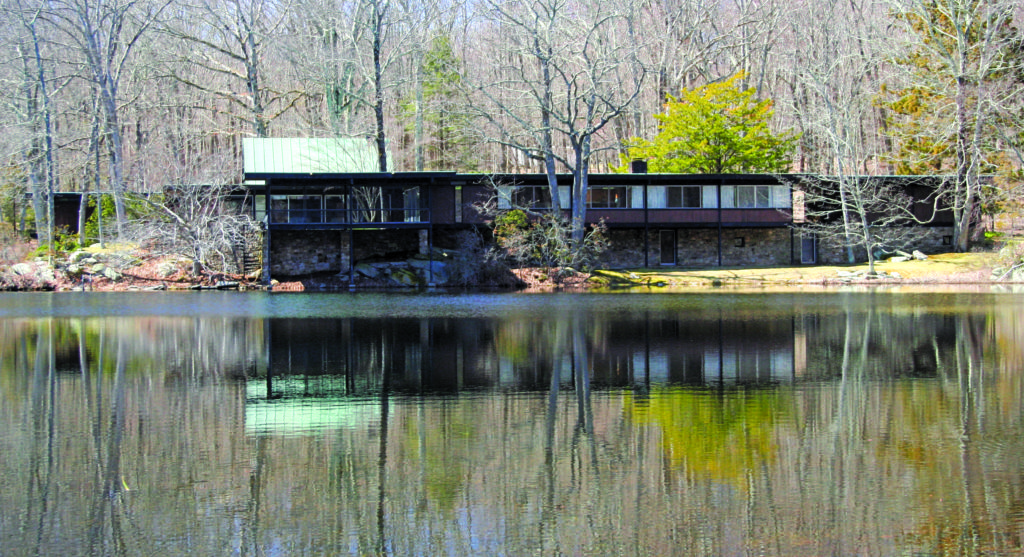
The Straus House of 1958, designed by Edward Larrabee Barnes, is the largest mid-century modern house in Pound Ridge at 6,800 square feet. Courtesy Gina Federico
Carol Kurth Architecture + Interiors, PC designed a central platform in the Pound Ridge Historical Society museum, which in July displayed a Grasshopper Lounge Chair by Eero Saarinen, Armchair 400/Tank Chair by Alvar Aalto, and a bentwood stool and magazine rack by Finn Juhl. Furniture of equal caliber will replace those as the exhibit heads into the fall.
A video filmed, edited, and produced by Kate Benjamin features interviews with some figures central to the modernist movement in town, including Vuko Tashkovich’s widow, Stefanie, and an original mid-century modern homeowner, Joan Goldberg.
Accompanying the exhibit is a series of lectures. On October 5 architect and interior designer Carol Kurth will discuss mid-century modern design as a backdrop for iconic furniture and lighting designs of the twentieth century. The lectures take place at The Lionheart Gallery, a contemporary art gallery in Pound Ridge.
“We’ve never done anything like this before. This museum was transformed,” Ebie Wood, the Historical Society president, said of the tiny 1852 Greek Revival building across from the Inn at Pound Ridge by Jean-Georges.
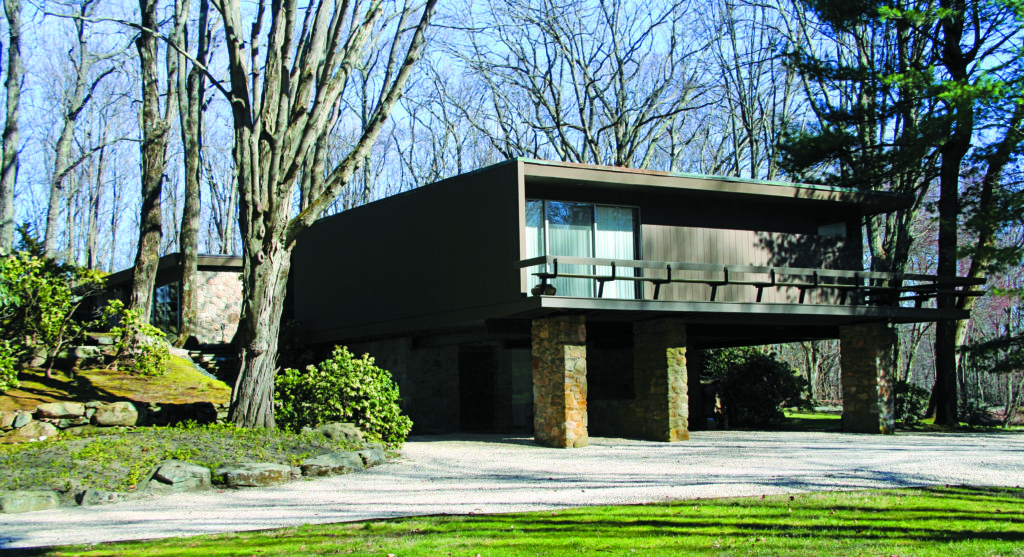
Designed in 1955 by 29-year-old architect Robert van Summern, the house was purchased seven years later by advertising executives Joan and Irwin Goldberg. Courtesy Gina Federico
Luxury lifestyles seem to define Pound Ridge these days. Once upon a time, it was the clear-eyed vision of modernism that luxury was a matter of less—the right less—and not more.
More on Modern in Pound Ridge can be found on the Pound Ridge Historical Society’s website, poundridgehistorical.org. Inquiries and RSVP’s for lectures may be sent by email to info@poundridgehistorical.org.



